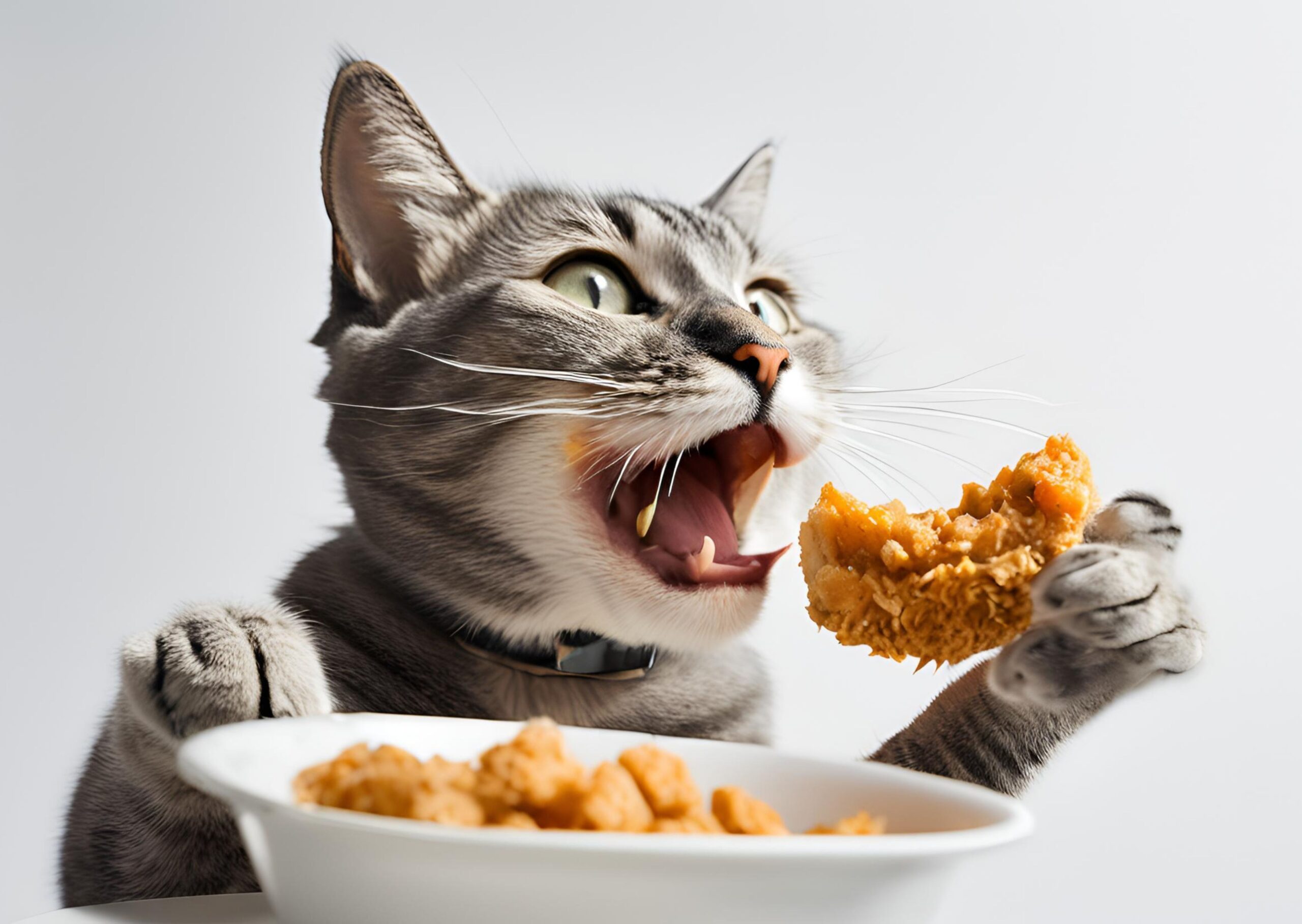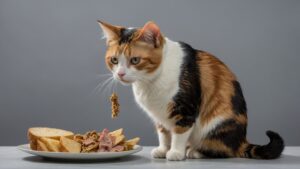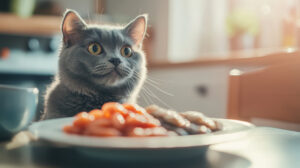
Pet owners who care for their cats need to ensure that their dietary choices will promote their overall health because cats show interest in various food items. The act of giving your cat a salty snack seems innocent yet the actual situation proves to be complicated. Can cats eat salty food? The scientific research about salt and its dietary impact on cats forms the basis of this guide. This blog serves all cat caregivers including new owners and researchers by delivering practical recommendations with expert guidance and complete explanations about proper dietary supervision for your feline friend.
The following text examines the appropriate role of salt in your cat’s diet while providing guidance on selecting optimal food options.
The Effects That Salt Consumption Has on Cats
The health of all living beings depends on salt yet people must avoid excessive consumption. Salt functions to balance electrolytes within the body of human beings yet cats require a different dietary approach.
The nutritional requirements of salt for cats in their diets remain a topic for discussion.
Cats require specific amounts of sodium and chloride which qualify as salt. It is essential for:
- Regulating electrolytes in the body.
- Maintaining nerve and muscle function.
- Supporting proper hydration.
Commercial cat food products designed for their dietary needs provide domestic cats with enough sodium to fulfill their nutritional requirements. Dry cat food must contain at least 0.2% sodium as per the requirements set by the Association of American Feed Control Officials (AAFCO). Additional sodium beyond the recommended level creates possible health threats for cats.
The Dangers of Salty Foods for Cats
Excessive salt consumption can cause:
- Excessive thirst due to salt consumption leads to dehydration in cats.
- The condition known as Salt Poisoning (Hypernatremia) produces vomiting diarrhea alongside lack of coordination and seizures as symptoms.
- Senior cats along with other feline patients with kidney problems experience worsened health when they consume excessive salt.
According to VCA Hospitals research small amounts of salty foods present a health risk to both cats and dogs. It is vital to refrain from letting your cat experience your snack desires.
Common Salty Foods That Are Dangerous for Cats
The consumption of human food by pets remains unsafe for many types of food. The following list contains salty foods which should never be given to cats:
- Chips and Pretzels
- Cheese and Processed Meats (e.g., salami, bacon)
- Salted Nuts
- Canned Soups or Broths
- Pickles and Sauerkraut
A tiny amount of these foods can result in harm to sensitive feline bodies.
The existence of salt poisoning as a real medical condition in cats remains a question.
The medical condition known as salt poisoning presents itself as a dangerous reality that affects cats. A cat develops salt poisoning after eating too much sodium which causes their body systems to become overloaded.
Symptoms of Salt Poisoning in Cats
A cat can show symptoms of salt poisoning starting from the time it consumes the salt and these symptoms include:
- Extreme thirst and frequent urination.
- Vomiting and diarrhea.
The symptoms include both decreased appetite and total food rejection.
- Weakness, lethargy, or tremors.
- Neurological symptoms like disorientation and seizures.
Contact your veterinarian right away if your cat consumes salty food while showing these symptoms.
How is salt poisoning treated?
Treatment typically involves:
The medical treatment includes IV fluids which restore electrolyte balance.
- Medications to control symptoms.
- Ongoing monitoring to assess improvements.
Early detection of salt poisoning remains essential because advanced cases might result in permanent harm or death.

How Much Salt Is Too Much for a Cat?
Research indicates that toxic salt amounts in cats reach 4 grams of salt for every kilogram of their body weight. The high number of toxic salt levels should not be misleading since specific processed or salty foods can easily reach this threshold when portion sizes remain uncontrolled.
Table of Common Human Foods with High Salt Content
|
Food |
Salt Content (per serving) |
Safe for Cats? |
|
Potato Chips |
~150mg |
No |
|
Cheese (Cheddar) |
~170mg |
No |
|
Canned Tuna |
~260mg |
No (unless unsalted) |
|
Hot Dog |
~500mg |
No |
|
Saltine Crackers |
~90mg |
No |
Note: These values are approximate and based on common serving sizes.
Even trace amounts of these foods in your cat’s diet can lead to adverse effects, so it’s best to avoid feeding them altogether.
FAQs About Cats and Salty Foods
Many cat owners have these common questions regarding salt and feline health so here are some answers:
Is it safe to feed my cat unsalted food from the human diet?
Yes, in small amounts. Your veterinarian should review any plans to give your cat unsalted meat like boiled chicken or turkey.
Do Cats Naturally Crave Salty Foods?
Nature has not programmed cats to seek salty foods as part of their dietary preferences.
Cats lack the human desire to consume either salt or sweet foods in their diet. The protein content in their diet takes priority because cats must consume meat exclusively to survive.
Are Treats from Pet Stores Safe?
Pet store treats provide a safe option for pets.
Store-bought treats designated for cats are usually safe because manufacturers create these products to match the nutritional needs of feline species. Read the nutritional labels to check sodium levels in the products.
What Should I Do If My Cat Accidentally Eats Salty Food?
Take away the food right away then watch for any signs of discomfort such as increased thirst or vomiting from your cat. When symptoms appear you should seek advice from your veterinarian to avoid medical issues.

Alternatives to Salty Foods for Cats
Healthy snack alternatives for your pet can be found in Cooked Plain Chicken or Pieces of Tuna without salt additives or Commercial Low-Sodium Cat Treats and Small portions of Fresh Melon when given in moderation.
- Cooked, Plain Chicken
- Tuna pieces without added salt make suitable treats for cats.
- Commercial Cat Treats (low sodium)
- Small Pieces of Fresh Fruit like Melon (in moderation)
The offered alternatives help your cat maintain health without sacrificing their enjoyment of tasty snacks.
Expert Quote from Vets
Pet owners need to exercise caution regarding both the origin and amount of salt in their cats’ dietary consumption because sodium remains an essential nutrient. The prevention of salt poisoning becomes possible through both awareness and appropriate feeding practices.
- Dr. Anna Johnson, DVM.
A Few Key Stats to Remember:
- Eighty-five percent of cat owners remain ignorant about the potential dangers that excessive salt presents to their pets’ diets.
- Commercial cat food products already contain sufficient sodium content therefore pets do not require additional salt.
The data demonstrates why proper education about balanced nutrition should be provided to cat owners.
How to Keep Your Cat Healthy
Caring for your cat starts with following these important points: new owners and those who want their cats to stay healthy should take note.
- Your cat should eat only approved high-quality commercial food that vets recommend.
- Human snacks must be avoided because they contain salt.
- Hydration is key! Your cat needs constantly accessible fresh water at all times.
- Contact your veterinarian for proper dietary recommendations when your cat suffers from particular medical conditions.
Your cat needs a nutritious feeding plan that matches the same care level you show to them.
Wrapping Up
The short response to whether cats can eat salty food is no. The sodium requirements of cats are minimal but human food with high salt content exceeds their safe consumption limits.
Selecting vet-approved food and treats for your cat’s diet will lead to long-term happiness and health together with continuous purring. The nutritional concerns about your cat need specific evaluation which you can achieve through consultations with your veterinarian.
Remember: Every snack matters. A small amount of curiosity and attention toward your cat’s dietary needs will create significant benefits. More expert pet advice can be found on this blog which you should bookmark while you should also share it with other cat enthusiasts.
Leave a Reply